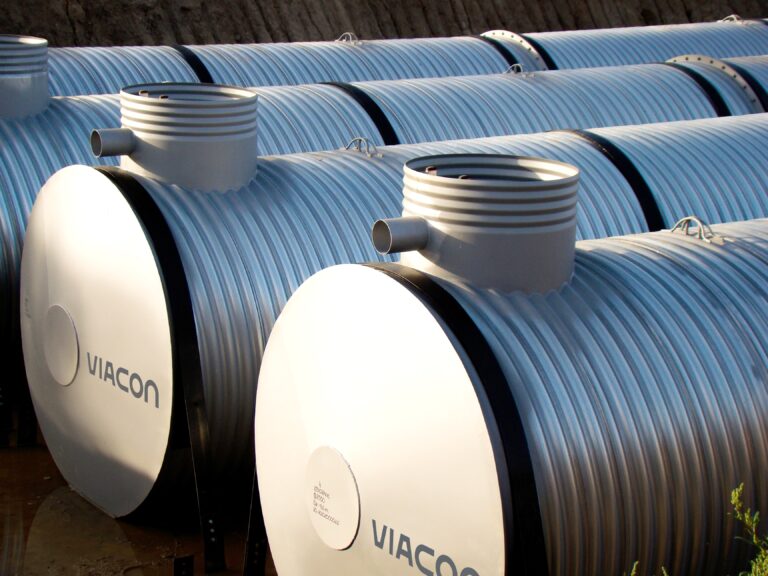Underground passage
Enhance infrastructure and sustainability with our underground passages
Underground passages are critical components in modern infrastructure projects, offering a range of solutions for transportation, environmental protection, and utility management. ViaCon specializes in the design and construction of underground passages that meet the diverse needs of urban development, transportation networks, and ecological sustainability.
Applications of underground passages
Underground passages serve multiple purposes across various sectors. In transportation, they provide safe and efficient routes for pedestrians, cyclists, and vehicles, especially in areas where above-ground crossings are impractical or unsafe. These passages are also vital in facilitating wildlife crossings, helping to preserve natural habitats and reduce roadkill by allowing animals to traverse beneath highways and railroads.
In addition to transportation, underground passages are used in utilities management. They house essential infrastructure such as water pipelines, electrical cables, and communication networks, protecting them from environmental hazards and ensuring reliable service. Moreover, they play a crucial role in urban drainage systems, channeling stormwater away from populated areas to prevent flooding.
Safety and accessibility
Underground passages enhance safety by providing a controlled environment away from traffic and other surface-level hazards. They are designed to be accessible to all users, including those with mobility challenges, ensuring inclusivity in urban design.
Environmental protection
Our tanks help mitigate the environmental impact of stormwater runoff by capturing rainwater before it reaches drainage systems. This not only reduces the risk of flooding but also prevents pollutants from entering natural waterways.
Space efficiency
In densely populated urban areas, space is a valuable resource. Underground passages optimize land use by moving essential infrastructure and transportation routes below ground, freeing up surface space for other developments or green spaces.
Durability and longevity
Constructed with robust materials such as steel or reinforced concrete, underground passages are built to withstand harsh environmental conditions and heavy use. Their long lifespan makes them a cost-effective solution for infrastructure projects.

Our expertise in underground passages
At ViaCon, we bring decades of experience and engineering expertise to the design and construction of underground passages. Our solutions are tailored to meet the specific requirements of each project, whether it’s a pedestrian underpass, a wildlife corridor, or a utility tunnel. We focus on delivering structures that are not only functional but also environmentally sustainable and cost effective.
An underground passage is a critical infrastructure component constructed beneath the ground. It offers versatile solutions for a range of needs, from transport and wildlife protection to the management of utilities like water pipelines and cables.
Underground passages are highly versatile and are used across several sectors:
-
Transport: Providing safe and efficient routes for pedestrians, cyclists, and vehicles, often as underpasses.
-
Wildlife protection: Creating wildlife crossings that allow animals to traverse safely beneath motorways and railways, which helps to preserve natural habitats and reduce animal-vehicle collisions.
-
Utilities: Housing essential infrastructure such as water pipelines, electrical cables, and communication networks in protected corridors.
-
Stormwater management: Functioning as culverts or channels to direct stormwater away from built-up areas and prevent flooding.
-
Enhanced safety: They separate vulnerable users, like pedestrians and cyclists, from vehicle traffic and other surface-level hazards.
-
Space efficiency: They optimise land use in densely populated urban areas by moving infrastructure below ground, freeing up surface space for developments or green spaces.
-
Durability and longevity: Built with robust materials such as steel, they are designed to withstand harsh conditions and heavy use, making them a cost-effective, long-term investment.
-
Environmental protection: They play a key role in preserving biodiversity by creating safe corridors for wildlife.
They make a significant environmental contribution, primarily by serving as wildlife crossings. These help to maintain natural habitats and reduce roadkill by allowing animals to move freely beneath major transport routes. They are also integral to sustainable drainage systems (SuDS), helping to prevent polluted surface water from entering natural watercourses.
ViaCon brings decades of experience and engineering expertise to the design and construction of underground passages. We offer bespoke solutions tailored to meet the specific requirements of each project. Our focus is on delivering structures that are not only functional and cost-effective but also sustainable and environmentally responsible.
